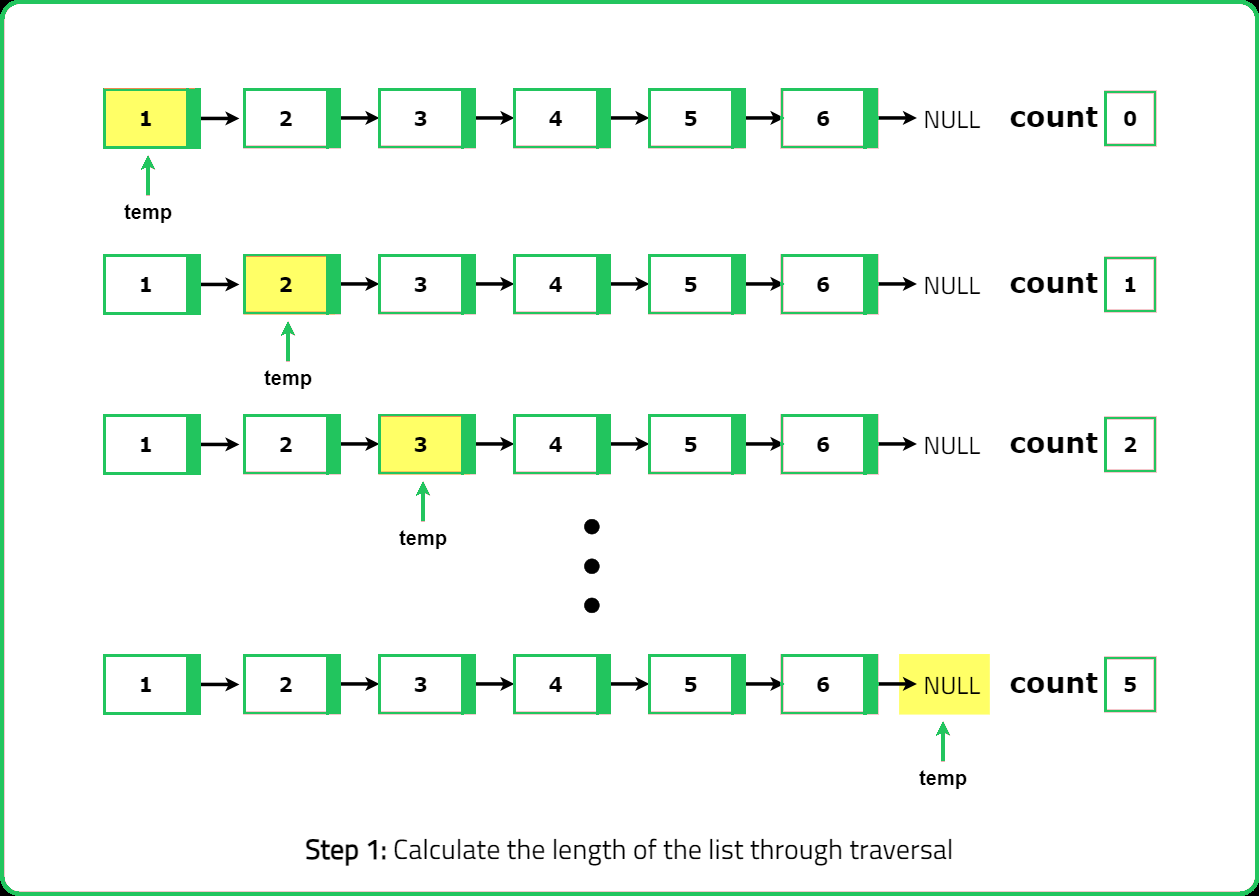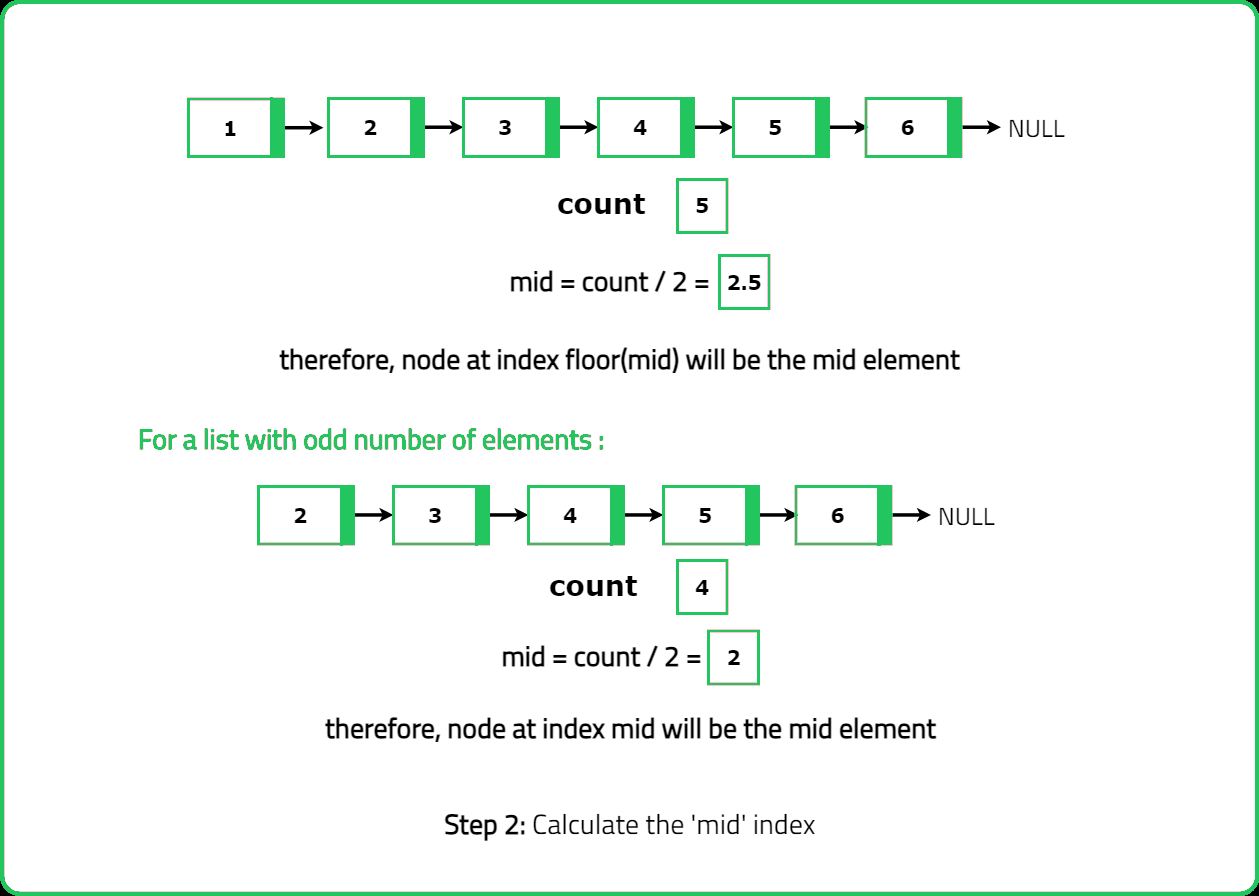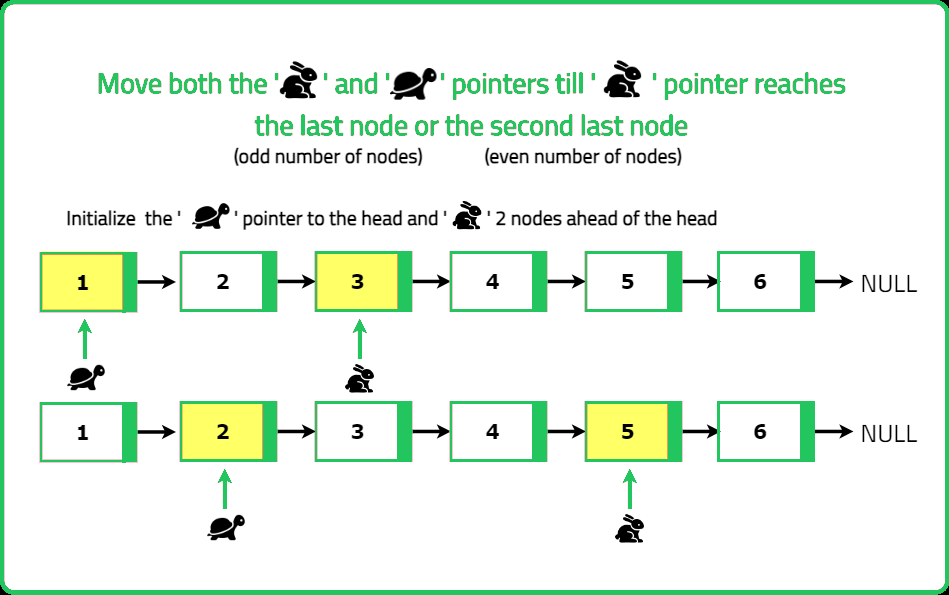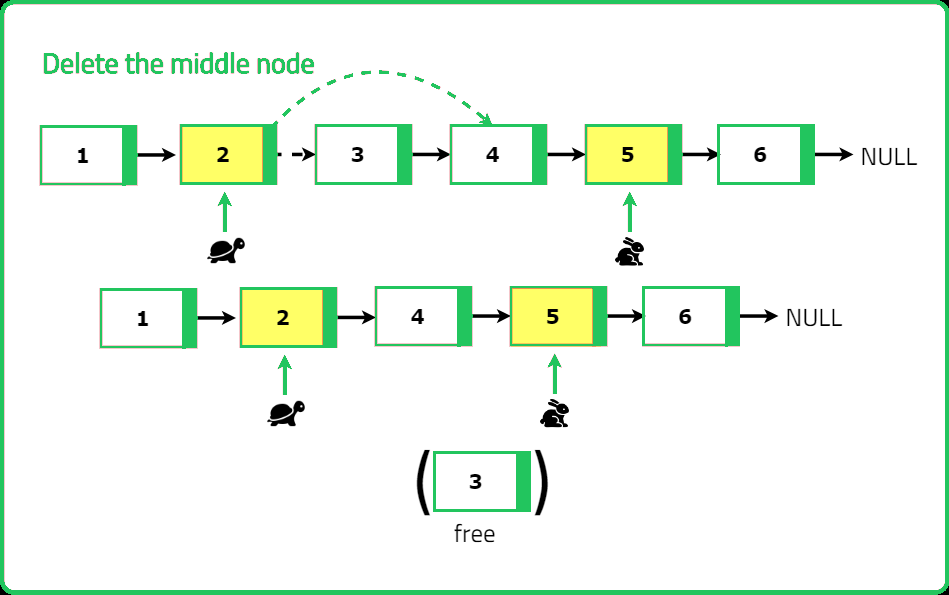Delete the middle node in LL
Linked-List
FAQs (Medium)
Medium
- The underlying concept of this problem can be found in applications such as music streaming apps like Spotify or Apple Music, where a linked list data structure can be used to organise songs in a playlist
- Performing operations such as deleting a song, or in this case a "middle node," is a common task in managing these playlists
Given the head of a non-empty singly linked list containing integers, delete the middle node of the linked list. Return the head of the modified linked list.
The middle node of a linked list of size n is the (ân / 2â + 1)th node from the start using 1-based indexing, where âxâ denotes the largest integer less than or equal to x.
Examples:
Input: head -> 1 -> 2 -> 3 -> 4 -> 5
Output: head -> 1 -> 2 -> 4 -> 5
Explanation: n = 5.
⌊n / 2⌋ + 1 = 3, therefore middle node has index 3 and so the node with value 3 was deleted.
Input: head -> 7 -> 6 -> 5 -> 4
Output: head -> 7 -> 6 -> 4
Explanation: n = 4.
⌊n / 2⌋ + 1 = 3, therefore middle node has index 3 and so the node with value 5 was deleted.
Input: head -> 7
Constraints
- 1 <= number of nodes in the Linked List <= 105
- 0 <= ListNode.val <= 104
Hints
- A brute-force approach would: Find the length n of the list (O(n)). Traverse again to the (⌊n/2⌋)th node and delete it (O(n)). Drawback: Requires two passes (O(n) time).
- To delete the middle node in a single pass: Use two pointers (slow and fast). Move slow one step at a time and fast two steps at a time. When fast reaches the end, slow will be at the middle node. Delete the middle node by skipping it.
Company Tags
Johnson & Johnson
Electronic Arts
Instacart
JPMorgan Chase
IBM
Etsy
Bungie
Reddit
HCL Technologies
Square
Alibaba
Dropbox
Snowflake
Ubisoft
PayPal
ARM
Western Digital
Stripe
Rakuten
Rockstar Games
Teladoc Health
Cerner
Optum
Uber
Pinterest
Google
Microsoft
Amazon
Meta
Apple
Netflix
Adobe




